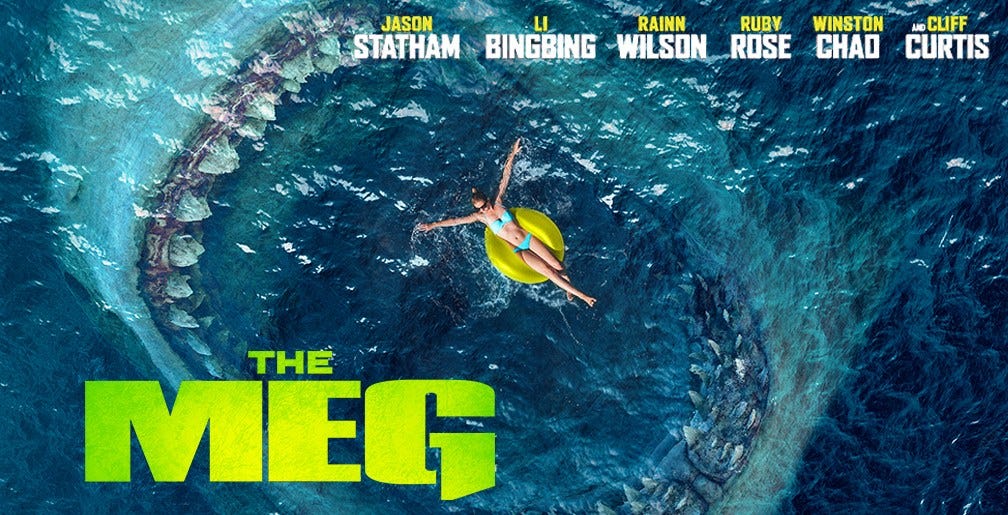Spending time
A deep dive into shallow dives
When I first moved to Texas, I ran across a folk song by Bill Morrissey called “Birches.” (Yes, a folk song. I was young and couldn’t afford better music, though this song is a doozy.)
The song depicts a conversation on a cold winter evening between a husband and a wife. She wants to party, or in this case drink wine and put birch logs in the wood stove to watch the flames go crazy. He passes on the wine and thinks she’s nuts for suggesting birch. Obviously you put oak on at night to keep the fire going longer, he says, bullying her into agreement. You don’t get the giant dancing flames with oak, but you do wake up in a tolerably warm home.
She sends him to bed, pours herself more wine, and does what she wanted to do anyway and loads the fire with birch logs, “each as white as a wedding dress.”
And she stood up in the heat. She twirled around the room.
And the shadows they saw nothing but a young girl on her honeymoon.
And she knew the time it would be short; the fire would start to fade.
She thought of heat. She thought of time. She called it an even trade.
What trades do we make with time? Do we spend it on the excitement of a birch fire, knowing it’ll cost us a cold house in the morning? Time comes at a cost, and we talk about it that way. We waste time, spend time, and put in time. We say time is money but don’t think of time as valuable unless you’re running out of it, or it you are thinking of lighting your night on fire despite the certainty of hell coming to pay in the morning.
I was reminded of this choice we all make in how to spend our time the other day when I was watching The Meg, the 2018 movie in which Jason Statham and an impressively international cast does battle with a giant shark. OK, maybe I was re-watching the movie, possibly for the fourth time. Which brings me to the only analysis of Jason Statham’s diving in that movie that you will ever need or that indeed exists at all.
Cinéastes such as we are used to seeing Jason Statham take of his shirt and, thus partially disrobed, commence beating people up with that self-same shirt. He does this so winningly that I once attempted merely to denude my own torso, albeit non-violently, and came away impressed at how much grace such a move requires as well as how little body fat is recommended whilst performing it. Going shirtless in a dramatic fashion, one learns, is not for amateur Jasons.
Jason Statham does not rest on his shirtless laurels in The Meg, though it would be partially inaccurate to say that diving represents a new direction for him. It turns out he competed in the 1990 Commonwealth Games on the British Diving Team. Taking off his shirt and beating people up with it was, as it turns out, Statham’s new direction, and diving into water is a return to his roots. Proof:
Unlike Jaws, the megalodon is revealed early in the movie. It’s big. It’s scary. But it’s not what the movie is withholding as its big reveal. In The Meg, the big reveal is Jason Statham’s trilogy of dives. There are three that plot a narrative arch elegant in its economy.
The first comes 53 minutes into the film. They decide to tag the shark’s fin with a beacon, and Jason Statham volunteers to swim out with a harpoon and do it, establishing both his bravery and his chemistry with his co-star Bingbing Li in the pre-dive repartee. He’s wearing a full red and black wetsuit. The dive is simple, off the stern into the water from no height. It’s an amuse bouche for what comes. The shark we’ve seen. This dive teases yet more reveals of increasing daring-do.
The next two dives come in quick succession, the first of which comes at the 1:02 mark after Bingbing Li encounters peril in the form of the giant shark trying to swallow her shark tank. Jason Statham is on an upper deck now, about 10 feet above sea level. He turns toward the bow, away from the commotion, to get some harpoon or something, and zips off his black hoodie revealing his muscled back. Is he going to beat the shark up with his hoodie? Has the shark seen any of the Transporter movies? There is a cut to Bingbing Li in the aforementioned peril, then back to Statham now trotting toward the stern, somehow now wearing that red and black wetsuit again, before launching himself into the ocean to rescue Bingbing Li, which is now going to be my new password. The dive is so movie-starry and heroic that you don’t actually worry that he’s going to jump into a big ocean with a massive shark or wonder how he put the wetsuit on in less than a second. The dive is so complete, so perfect, that it doesn’t occur that there could be another one.
Six minutes later, there is.
By now the shark has attacked the boat, causing it to capsize slowly to starboard. We find Bingbing Li and Jason Statham, again wearing his black hoodie, hanging onto the railing from the second deck about 20 feet above the water. Bingbing Li can’t hang on and drops into the water. He looks at her fall, hanging onto the railing by one hand not because he lost grip with the other but so he can get a better look at where he is going to dive. Because, as was foreshadowed with their charming banter preceding his first dive, we know he’s going to go in after her.
If the second dive dramatized resolute heroism, the third showcases an aerial ballet. Jason Statham’s focus on Bingbing Li’s fall is a quick, subtle moment that sets up a dance move of perfect athletic elegance: He launches himself with the one hand, somehow reverses in mid-air while seeming to hesitate, and only then dives down headfirst into the water to save Bingbing Li. Reader, I held my breath, and then I cheered.
The literary parallels to Virgil's Aeneid and Homer's Iliad and Odyssey are obvious, and mere pedantry compels me to explain them. Jason Statham’s troika of dives restarts the argument, once believed settled and dormant, of which order those three should be taught in. Applying the aforementioned aquatic analysis to this question reveals the correct order:
The Aeneid portrays an honorable man searching for a future for his people. This is the first, unfussy dive off the boat to implant a beacon onto the shark’s fin.
The Odyssey is an adventure of a singular hero. I defy anyone to see Jason Statham’s second dive into the water to save Bingbing Li from being swallowed alive by a giant prehistoric shark to not see the obvious similarities. If anything, Homer deserves as story credit for The Meg.
Finally, by Jason Statham’s third dive he has bantered with Bingbing Li. He has saved her from the aforementioned swallowing — and then charmingly stood by her bedside until she revived. By the time he spots her fall into the water so he can dive in headfirst after her they are in a better relationship than most marriages. Ladies and gentlemen, I give you the Iliad.
This is how I spend my time.
What I’m reading
My friend Jen Bendery wrote a profile of her favorite rock star, Kristin Hersh of Throwing Muses. It took a turn.
When journalists want to make fun of you, they write down what you say and put it in the newspaper. When Isaac Chotiner wants to kill you in the town square, he publishes the Q&A.
Facing death reveals character, for the dying and the employers of their partners. This isn’t the easiest read, but it’s good.
Robert Caro reveals the secret of research in this excerpt from his latest book.
Linda Holmes makes the case why I should see Brie Larson, whom I consider the second-most impressive white lady in America, in a movie I would normally avoid.
Revolutionary War General Casimir Pulaski was not a dude. Researchers think he was intersex or a woman. Either way, scoreboard, Britain.
Did you know that couples that elope are 12 times more likely to get divorced than those who get married in front of more than 100 guests? Here are four ways to use behavioral science to get people to follow through on their commitments.
If this piece reminds you of your workplace, you should probably find a new gig.
Unless your workplace is in DC, in which case you will never leave.
And apparently Maslow’s hierarchy of needs is not only crap (Seriously? This world is crowded with people pursuing self-realization not just in the absence of physiological and security needs but in spite of them.), but the famous pyramid was based on a faulty interpretation of Maslow’s work.
I have thoughts about New Orleans, and so does this guy. We do not have the same thoughts.
Related to the New Orleans piece is this smart bit about what a guy learned about journalism when his paper went under.
I have come to a conclusion about cross-linguistic journalism. Quite simply, it is that journalism, probably like all forms of storytelling, cannot be “translated,” just as good jokes with good punchlines cannot be translated. You can try, of course, but the subject dies in the attempt.
Whether the medium is text, video or sound, storytelling is always primarily about a relationship: that between the storyteller and his or her audience. This relationship breaks down when things are “lost in translation.” Good storytelling requires intimacy, and a shared vocabulary of references and tonalities, of attitudes and questions and presumptions. Good storytelling is of the audience, by the audience, for the audience.
Maybe that guy should have read this first: “How To Save The Internet,” by Buzzfeed’s founder and CEO.
“Too many newsrooms chasing the news, but missing the story.” If you, like me, are interested in the future of the news, read this.
Trust in leading news sources is down slightly since 2016, and the decline is largely concentrated among Republicans. People aren’t leaving social media. Here’s where and when executives get their news.
Alexandra Petri illustrates why laughing is easier than crying in contemplating the moral and professional rehabilitation of those who are leaving the administration. And she made me laugh audibly — out loud, if you will — with this satire of a common complaint of campaign coverage.
The unbelievably meta and true story of the movie with the working title “Untitled Baby Busters Project” that you know as Reality Bites. Also, the title is not synonymous with “reality sucks.”
Elise Hu’s newsletter, which does not suck and in fact largely inspired this newsletter
Steve King is not funny. This article about how he spends his days is.
Ain’t nothin’ wrong with this takedown of accusations that AOC engaged in “verbal blackface.”
Want to get in a state of deep focus you probably call “the zone”? Here’s how.
Creativity comes from the part of your brain responsible for movement, reflexes and coordination but not from the part of the brain responsible for remembering that this part of the brain is called the cerebellum, which, as it turns out, is not a smart plantation house in the South.
Yet another example of why it’s humiliating to be a patriot these days: the President’s visit to Mount Vernon.
A great — nay, epic — Twitter thread about finding the President of Ireland in a K-hole.
The neuroscience behind why you freak out when happening upon extremely hot people — or why people act oddly when they meet you even though you’re not famous
The neuroscience behind why you need emotions to make rational decisions.
A coloring book explaining Modern Monetary Theory by Bernie Sanders’ economic adviser (I am not kidding, though I can’t in good conscience say this is not a joke.)
Finally, my friend Alex wrote something about his experience in war that is so good I didn’t feel worthy to read it. Seriously, this is the best thing I read this week.
What I’m listening to
“Birches” by Bill Morrissey, obviously
“Stuck In Your Head,” by Calista Garcia, the daughter of a friend of mine. I used to see her play at open mics at pizza parlors while she was learning how to be this. Kudos, kiddo.
Mac Demarco’s lo-fi “Let My Baby Stay” and Amandla Stenberg’s queer r&b (and to my mind superior) take on it.
Walker Lukens’ “a very ADULT playlist on Spotify” (You do have your tickets to his show at the Mohawk, right?) (Also, you pre-ordered his new album, right??)
Marc Maron interviewing T. Bone Burnett about turning sound waves into digital blocks at the half-hour mark
Keri Blakinger’s podcast for The Houston Chronicle, “Behind the Walls,” which deals with criminal justice. Keri did time on a drug bust and brings a knowing, sympathetic perspective.
Anderson .Paak’s Ventura
Low’s dark album, “Double Negative,” which is good to have on while you’re working
Nico’s “Chelsea Girl”
Sasami’s “Sasami”
Crooked Fingers’ “Sleep All Summer,” and then St. Vincent and The National’s cover that lifts off and floats just above the lake in the sunshine, and then Neko Case and Eric Bachmann take a crack at it. Such lovely venom.
Cold ways kill cool lovers
Strange ways we used each other
Why won't you fall back in love with me?
There ain't no way we're gonna find another
The way we sleep all summer
So why won't you fall back in love with me?
What I’m watching
Holland Taylor interviewing Stacey Abrams at the 92nd Street Y.
Dessa’s TEDTalk, “Can we choose to fall out of love?” Yes, that Dessa.
The futures market on the Democratic presidential primary on PredictIt.org.
This scotch ad that was banned for promoting risky behavior that wasn’t drinking alcohol but jumping from a mountain to gain the power of flight. Six complaints was all it took to get this ad taken off the air.
The Highwaymen on Netflix was fine and a good reason for Netflix to exist, because if I paid money to see this in a cinema I’d be upset
If Amy Poehler made a quirky art house movie it would probably be a lot like Unicorn Store, which not only is a great excuse to watch light reflect off Brie Larson’s face while she does interesting things with the greatest cast that could possibly exist right now.
The Mule, Clint Eastwood’s movie about being a drug mule. There’s a scene in which DEA agents racially profile a Hispanic driver. As I was watching it, I couldn’t stop thinking, “Holy crap. Clint Eastwood is telling this story. He chose to do this.” The movie is less remarkable than the fact that Clint Eastwood chose to direct it.
What do you think of today's email? I'd love to hear your thoughts, questions and feedback. I might even put ‘em in the newsletter if I don’t steal it outright.
If this newsletter is of some value to you, consider donating. Honestly, I’m not doing this for the money. I’m writing this newsletter for myself, and for you. And a lot of you are contributing with letters and by suggesting articles for me to post. But some of you have asked for a way to donate money, so I’m posting my Venmo and PayPal information here. I promise to waste every cent you give me on having fun, because writing this newsletter for you is some of the most fun I’ve had. Venmo me at @Jason-Stanford-1, or use this PayPal link.




